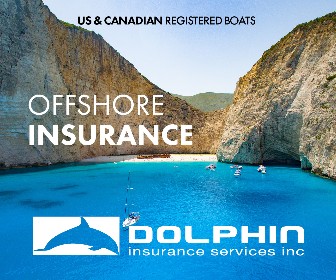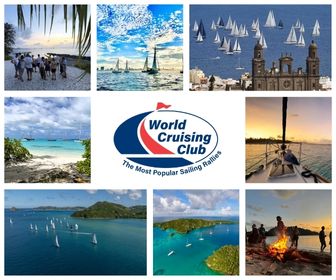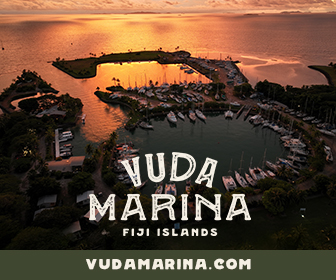After the Sails are Furled: A Retired Sailor Reminisces on a Cruising Life
When the realisation dawned that he was getting to old for cruising and that while physically he could still do most things (despite being unfit and arthritic) New Zealand sailor John Manning acknowledged that the mental strength required for offshore sailing had been largely lost. Now retired from the cruising life, John reminisces on his last offshore voyage to Fiji and his return to New Zealand in the first of a two-part essay for Noonsite.
Published 2 days ago
Last Passage
September 10, 2024: we had just returned to New Zealand. I was sitting on the foredeck of my yacht which was parked in berth I22 at Opua Marina. I was a visitor to Opua and this berth had been allocated to me temporarily. It was the same berth, I had used in May before starting my last offshore passage. I had come full circle. I was back where the voyage started. But so much was not complete. As usual my sailing plans were not finished.
Opua Marina in September is a very different place to Opua Marina in May. September was quiet, there was a stillness about the place. The temperature was about the same although the mornings and evenings were cooler. There were few if any visitors apart from ourselves. In May it was bustling with activity. Yachts were coming and going every day. People were making last minute changes. Crew were arriving and large numbers of yachts were actively preparing to leave NZ. I think I prefer May.
In 2020 I bought a new yacht. New for me, but nearly 60 years old. A timber ketch (kauri) designed by Athol Burns. It was to be a hobby yacht. One on which I could tinker and rennovate to my hearts content. It was wooden so it would need all the tinkering time I had left. I planned to use my experience in engineering and marine repair to improve the yacht and bring it into the 20th century. Now I know what I have just said, but this yacht needed a lot of upgrading and I only had one shortened life remaining. Bringing it in to this century would have to be someone elses task.
The goal for all that work was to build a floating holiday home which I could use in New Zealand’s Marlborough Sounds. Yet here I was in September 2024 having just completed another offshore passage.
When the yacht Westwind V, was built, the family who built it, (The Lowes, from Hastings) first gave it a run around NZ and then set off overseas as a family of four, sailing around Australia, then onto Papua New Guinea and the Solomons and Vanuatu before finishing in Fiji and a short stay at Norfolk Island on the way home to New Zealand. That adventure took four years and ended in 1971. The fact that the yacht was ready to start again in 2024 is a testimony to the quality of workmanship Mr Lowe put into building Westwind V.
Plans that are Written in the Sand
My goal for 2024/2025 was to recreate some of that first voyage. However yachting plans are written in the sand below the hide tide mark. I achieved precious little of that goal.
In the midst of renovating Westwind, in October 2022, I suffered a serious heart attack. The general consensus of the medical profession was that there wasn’t much hope for me. However the surgeon who installed my stent told me, I would probably do okay. Legal and medical opinions are the same, in the sense that you choose the ones best suited to your plans.
In 2020 a man from Christchurch, Andrew McGeorge, organised a yacht rally from New Zealand to Japan. Sailing to Japan had been an ambition of mine since my daughter moved there about 15 years ago. The heart attack put an end to that, but as consolation I would do another South Pacific passage and in May 2024, at Opua, I was at the start of my fifth voyage to the Pacific Islands.
To reassure my wife, Ann, that she would not be left to solo sail the yacht home, we had arranged for crew. Lauren Donovan, an American on a working holiday in NZ, would join us for the trip to the first port, a destination then uncertain. Someone should write a book about Lauren’s life. Though only 31 she had packed in a lot of adventure.
When I first met Lauren in Wellington I told her I didn’t want young people on board and I didn’t like Americans. She said little about that and just planned to prove me wrong. Which she did. If I were to now choose my ideal crew for a cruising yacht she would be at the top of the list. (To put Lauren’s age in perspective she is younger than all of my three children.)
At the last moment two days before our planned departure we met a French woman, Flora Bourgarde, on pier ‘I’ at Opua. She was on an ICA yacht bound for the Pacific Islands, when at the last moment the yacht owner abandoned the voyage. We said, why not join us, and then went through a panicked flurry of rearranging our Cat 1 departure certificate (a New Zealand matter), which now had to include approval of the crew as well as the yacht.
She was 32, contemporary to Lauren and the two of them quickly became best of friends. They both discovered a common love of “Buffy the Vampire Slayer”. And as they downloaded and re-watched every episode it proved to me just why I did not want youngsters on the yacht.
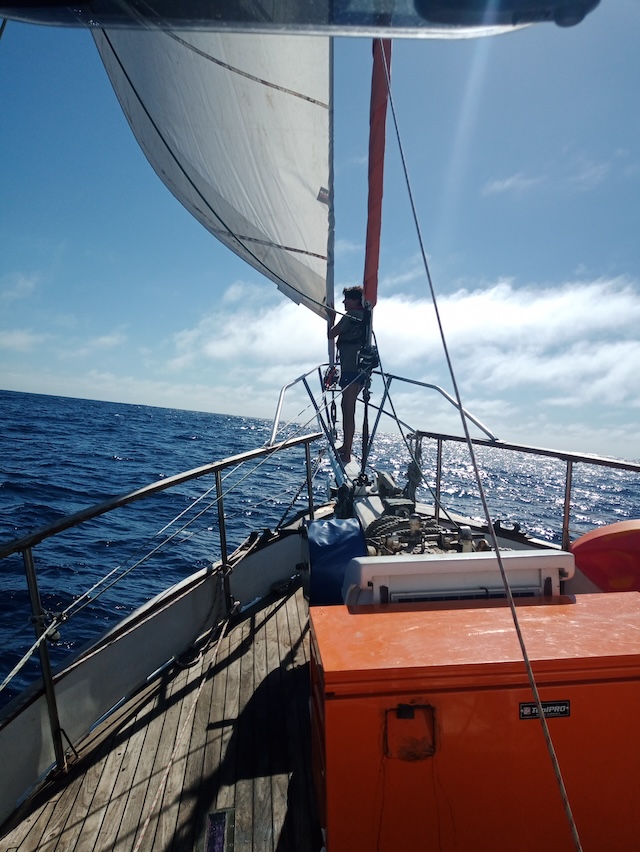

Age Eventually Catches Up
After making our way from Wellington to Opua, a trip which took in Napier, Tauranga, Whitianga and Marsden Cove and then three weeks at Matauwhi Bay, (Russell), Ann and I felt reasonably assured that we had completed a good shakedown cruise and got the yacht ready for offshore. In many respects we were correct but the age of the vessel and ourselves, did eventually catch up and cause problems.
While in Matauwhi Bay we had thought of cancelling the passage to Fiji and staying on the East coast of Northland. We really enjoyed our stays at Marsden Cove and Matauwhi Bay and later equally enjoyed staying at Opua.
However we set off on 11 May. One or two days after a large group of ICA yachts left for Minerva and Tonga. We could not understand the ICA choice of start date. The marine forecasts had 3.5m seas and strong headwinds for the track to Tonga. Our approach was far more conservative. We gave up a plan for another visit to Minerva. We stayed west and went directly to Fiji. Throughout our passage we were about 50 to 70 miles west of a strong band of northerly winds which didn’t vary for over four days. We made Denerau in eight days and ten hours after a relatively calm passage but one with uncomfortable rolling due to mixed swell directions. The seas had been between half and one metre and the winds between 12 and 18 knots for the whole trip. Better than average weather.
Approaching Fiji at Night
The approach to Fiji was, as normal, at night. For some reason I always seem to arrive there at night. Navula passage is not difficult at night, at least it has never before been a problem, What stood out on this approach was the amount of shore lights. We had to rely on the GPS to find the entrance to Navula. While there were lots of shore lights, the leads were not lighted and there was one fewer navigation light on the southern side of the passage. However once inside it was a simple run to Denarau. I was immediately reminded of sailing rules in Fiji when I noticed a boat with only a cigarette glow for a navigation light. We anchored in Denarau harbour entrance and went to sleep.
Next day we motored into Denarau harbour, were given the wrong instructions for reaching our designated berth, strayed about 1 metre to the side of the channel and beached ourselves on a sandbank. Two hours later once the tide lifted us we made it to our berth.
Customs and Immigration were in one sense a new experience and in another a very old experience. The officers of customs and immigration in Denarau were trying every ruse available to overcharge and seek extra payment. A shock after the Banimarama years when corruption was stamped out of Fiji. A reminder of a Fiji, 20 years ago.
We looked again at Denarau. It was easy to be disappointed. But some things had not changed. Day one I got food poisoning. Every time I have been to Denarau someone on the crew has experienced food poisoning. This time it was my turn. Ann picked up a flu like virus. The “girls” were fine but Ann and I were completely floored.
After four days at Denarau arguing with immigration about signing crew off the yacht, we moved across to Musket Cove in order to get some breeze and cooler conditions, also because the “girls” wanted to go there. After a few days finding out that Musket was not the place it used to be, (or possibly it was just the same) we started on our way to Volivoli where Lauren and Flora were going to spend four weeks as volunteers at an eco-lodge. We made it as far as Vuda Marina where we pulled in. Ann and I were in a sorry state not yet recovered and so the “girls” caught the bus to Volivoli.
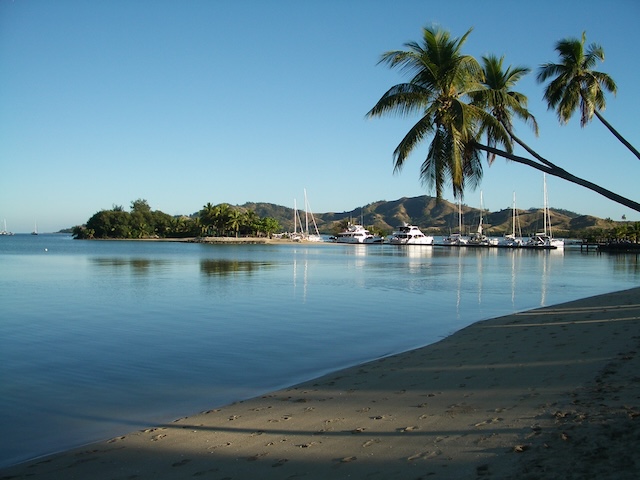

We were that knocked about by our health problems that thoughts of going home early were encroaching on our planning. Vuda offered us a place to recover, a place I think of as our Fijian home.
After about three weeks we had recovered sufficiently to think about what to do next. Because we had anchor winch problems (really hydraulic system problems) we did not feel confident to roam about the islands and eventually hired a car , taking our time diving around the circumference of Viti Levu.
After four weeks away Lauren and Flora came back to Vuda for a week and then left to continue their travels. Jashinta in the Vuda Marina office had sorted out signing crew off the yacht. She was one of those exceptionally competent women who used to be given jobs as secretaries but now take their true place as managers.
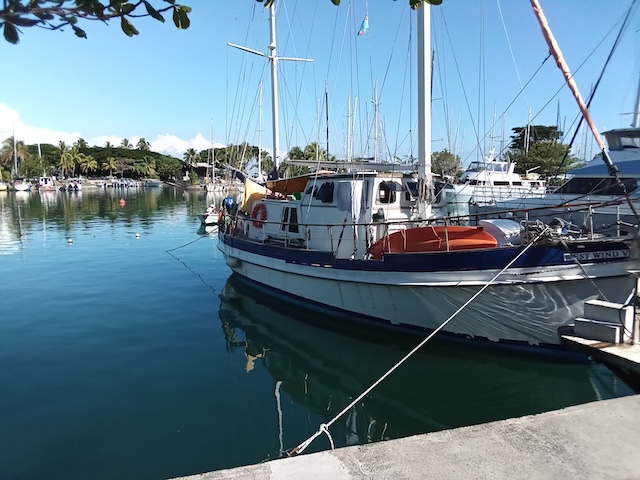

Another Look at Musket Cove
Having fixed the anchor winch issue we went back to Musket for another look. What had disappointed us on the first visit was that nothing had improved from 2015, our last visit. The dockside had been knocked about in a cyclone and was not yet repaired. The shower and toilet block, available to yacht crews, was in worse state than in 2003 on my first visit. The water in the showers still would not let soap lather. The selection of food in the cafe was less than in 2015. The quality of the food had dropped. The store was the same and possibly had more things to sell, but wine was not one of them. All the investment on Malolo-Lailai Island was going into Plantation Island resort. New chalets, new swimming pools, new bars and new cafes. Also a new liquor store selling $15 bottles of NZ wine for $90 Fijian. The shop keeper just shrugged and said that’s just the way it is.
We hung out at Musket for nearly two weeks mixing with a friendly and interesting group of international sailors. Sophie had passed away, we were sorry to hear ( I have fond memories of her telling me off for every minor transgression of her rules) and Patrick, who we had met in 2015, was now in charge of the moorings and yacht club. We found that wine from the island bar, although expensive, came in generous sized glasses. Pizza was the best meal option. The store sold really good salami, not found anywhere else in Fiji.
In the midst of this stay I wandered over to ‘Dick’s Place’. After buying a beer I strolled around under the rafters where the names of visiting yachts are carved into the timber. Names of yachts that visited Musket in its earliest days. There amongst them was Westwind V. My yacht. A record of its 1988 voyage.
Surprised by Humpback Whales
Then we decided we had to do more. So we spent four days making the move to Savusavu. Stopping at Vatia Wharf, Volivoli Point and Wainunu Bay. On the way we came across something we were unaware of and found very surprising. Just after crossing into the Vanua Levu reefs, we saw two whales swimming about 100m from the yacht. Not the pilot whales we had seen before in Fiji, these were humpbacks, as long as our 47ft yacht.
Then the real surprise, ahead about 200m, another whale breached sending over half its length up out of the water then repeated that half a minute later. We took it in our stride and carried on across to the far side of Wainunu Bay to an anchorage near the village of Raviravi on the west side of Nasonisoni passage. Then whales again. Two humpbacks were swimming around the small bay where we had anchored. They continued to do so for another two or three hours. Noisy things close up. Apparently humpbacks regularly visit Fiji but we had never seen any before.
Next day onto Savusavu. After hearing negative reports about the new Nawi marina we booked a berth at the Copra Shed dock. I like the Copra Shed, but Fiji has changed. Growth and possibly better electricity distribution has brought with it a lot more light at night but also a lot more noise during the day. For some reason there were a small group of shopkeepers who would play very loud music, not in their shop, but broadcast into the road outside the shop. Imagine listening to a bollywood soundtrack on continuous replay from eight in the morning until six at night seven days a week. After 10 days I could stand it no more. We booked to refuel at Nawi marina and once at the fuel dock booked a berth at Nawi. Nawi is the most modern marina in Fiji and has the best facilities by far. It is equivalent to Opua or Marsden Cove in New Zealand and is priced slightly cheaper than either of those. The other marinas in Fiji that we saw were much lower quality and at higher prices than NZ.
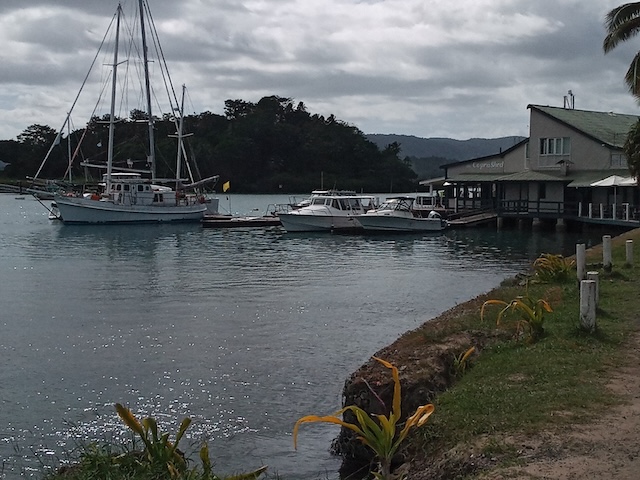

Still a Great Stop
Savusavu is still a great stop, an interesting town, cheaper prices than Viti Levu and one of the best places in Fiji. We were there for nearly four weeks. Nakama Creek has changed greatly. The scatter of moorings has disappeared to create a channel to the new marina. There is now a new boatyard and travel lift at Valaga Bay two or three miles north of Nakama The swamp on Nawi Island is now a very tidy marina with an excellent restaurant. The showers and toilets are fit for a five star hotel. But like most places in Fiji they have not yet got the drains working.
When you travel around Fiji you begin to wonder if staff at different places are in a competition to see who can be the most welcoming and helpful. In the end you realise they are just being Fijian. Fijians are really good at making you feel welcome. At one of our stops their first words were “welcome home”. Bula. The other odd thing was all the marina administrators were named Singh.
Realisation Confirmed
It was at Nawi that I confirmed my realisation that I was now too old for cruising. I had no interest in looking for the next anchorage, or visiting another bay or village. I was happy to just see again the places I remembered. I did not even need to find all of those memories because exploration was now about finding the best cafe in town.
We made our way back to Vanua Levu after four weeks. Stopping by the mill wharf past Nabawalou, then at Vatia Beach. In 2015 we found a new backpackers lodge at Vatia Beach. There wasn’t a trace of it left in 2024. We were headed to Musket again, possibly just to buy some salami. The plan was to stay at Musket until the end of August and then go to Vuda to await weather for sailing home.
On our way past Lautoka we decided why bother with Musket again. In the spirit of laziness which had dominated this trip we called Vuda marina, then pulled in there. Home again.
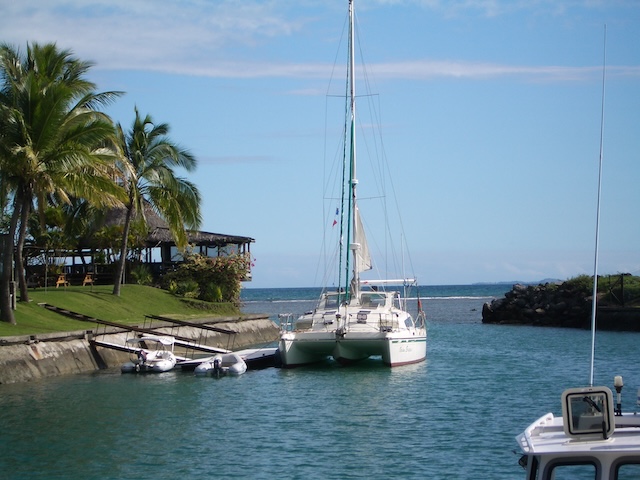

Assessing the Options
We had given up our plans for Vanuatu and Australia. Noumea was a problem but we found it impossible to gauge the significance of the problem. Reports from people who had recently been to Noumea were mixed. Reports from French sailors who had relatives in New Caledonia told of life threatening conditions.
While the political situation in Noumea did not help our sailing plans, the problems were greater than that. New Caledonia had a new rule requiring yachtsmen to have medical insurance. I cannot get that any more. While I could have bought a fake policy I was concerned that carrying significant amounts of prescription medicines, which I had to declare on arrival, would conflict with health insurance which said I was okay. I worried that even an immigration official would see the contradiction there.
Without Noumea the passage options were, Lautoka – Queensland, or Port Villa – Queensland. Each about 10 days at sea, each requiring care getting around the Chesterton reefs and then at the end of the passage having to get through the Australian reefs. We were sailing short handed. It was too much of a risk at our age.
The Effect of Age
In the end this is all rationalisation and excuses. The honest conclusion is that we were not up to the task anymore. The effect of age is a mixed one. While physically I can still do most things (despite being unfit and arthritic) there is a mental strength required for offshore sailing which I found I had largely lost. A yacht at sea is not a comfortable place to be. You can get thrown around a lot by the rolling and pitching motion. Older people bruise more easily. Simple things become hard work. Decisions about sailing directions and weather should be easier but in fact the surplus of information available now, makes it harder. In the end I had to admit I had lost the mental determination required to sail offshore.
Late August, again at Vuda Marina, waiting for weather. We backed into a berth put down our boarding ladder and then I had a look around. This would be my last visit to Vuda. My last days at the Boat Shed restaurant and bar. It was good that I had chosen to be here a little longer. This was where my sailing in Fiji had started. In 2003 I flew to Nadi, caught a taxi to Vuda and walked around the bowl to the yacht Kahukura 2. August 2024, I looked around the Vuda bowl again and could not believe what I was seeing. They had put my yacht in exactly the same berth where Kahukura 2 had been 21 years earlier. I had come full circle, I was back where my Fijian days had started.
We soaked up every bit of the atmosphere of Vuda Marina. We met as many of the sailors as we could. We caught up with those passing through, who we had already met. We became regulars at the Boat Shed bar. We ate at least one meal a day at the restaurant. Caught the bus to Lautoka every second day. Also we enjoyed something new. The extended marina includes a large reclamation which is currently empty. There are hanging chairs under the shade of fixed umbrellas at several locations which provide excellent places to relax in the sea breeze.
The hard stand at Vuda is a fascinating place. There are yachts from all over the world, the European world. Some are there for a few months others for longer. As you walk past them you can only imagine the stories attached to them. The adventures they were part of. Yachts from Germany, Scandinavia, Holland, France and the USA. For the most part the Australasian yachts were there for short spells. Some I recognised from home.
Waiting for that Weather Window
The weather window for a passage to NZ opened and closed and opened again. The forecasters seemed at a loss. We left on 31 August, for what was planned to be an eight day passage, with four days upwind.
After refuelling we tied up to the floating dock by the restaurant to wait for customs to clear us. That was all over by 11:30am and we made ready to leave. Then the marina staff came down to the dock and sang Isa Lei to farewell us. (Isa Lei is a song many will have heard but few know its meaning. The lyrics are about farewells and memories. Needing to take time to remember those still at home, because they will remember you far away.)
One memory I will treasure forever, at the end of Isa Lei, as we slipped our lines and pulled out into the channel, there was Gerry beating the drum above the floating dock.
It was 12:32pm, 31 August. I promised myself I would not look back. But I looked back, how could I not do so.
Passing Denerau, 1:30pm, don’t look back. Passing Malolo Island 3:30pm never look back. Navula Passage 4:30pm.
Good-Bye Fiji
The trip home confirmed this was our last offshore passage. It was hard work for two people in their late sixties. We were motor sailing with a trysail in place of the mainsail. The engine stopped after four days. Fuel starvation. We were about 400 miles east of Norfolk Island. Onto the drogue with a trysail and mizzen which proved an excellent hove to arrangement. We were in four metre seas with 18 – 25 knot winds when we stopped. Upwind again. The yacht proved to be very comfortable in those conditions. I cleared the fuel lines, changed the primary fuel filter then the following morning in two and a half meter seas we were off again. Sixteen hours hoved to for 9.5nm drift in eighteen to twenty five knots of wind. Most of all it was a good nights sleep for two tired old sailors
Later checking the changed fuel connections I noticed that the seawater pump was leaking from its rear seal. A day later the leak was very significant. Without a repair kit I put a spare electric pump in place of the impeller pump. It was enough to give us 1300rpm while keeping engine temperature at the normal 83 degrees. We were now a one speed yacht. The electric pump had a low duty cycle. Probably only one minute every fifteen before it would overheat. So I put a fan alongside it to stop it overheating. It lasted for the next five days. Thankyou Whale pumps.
Opua 3:45am, 10 September. Weather forecast at the start of the voyage, very wrong. It said four days upwind. Reality was seven and a half days upwind in nine and a half total including the 16 hours hoved to.
Customs and Immigration arrived at 9:00am. We relocated to a berth at 11:15am. The last third of the passage, getting to Wellington, could wait for summer weather.
John Manning
Westwind V
…………………………………
In Part Two of his essay to be published next month, John recounts some of the things he has learned and seen over his many years of life as a cruising sailor – from changes in yachts and navigation, to the sailors themselves.
…………………………………
© 2025 Noonsite. This content was edited by Noonsite. Do not reproduce without permission. All rights reserved.
The opinions expressed in this article are the author’s own and do not reflect the view of Noonsite.com or World Cruising Club.
If you have found this information useful, become a paid member to enjoy unlimited use of Noonsite plus many other perks. Your membership fees really help our small, dedicated team keep country information up-to-date in support of cruisers worldwide. Find out more about Noonsite Membership levels and benefits here.
Subscribe to our FREE monthly newsletter: https://www.noonsite.com/newsletter/
Related to following destinations: Auckland, Fiji, Lautoka (Vuda Point Marina), New Zealand, North Island (New Zealand), Opua (Bay of Islands), Port Denarau, Savusavu, Vanua Levu, Viti Levu
Related to the following Cruising Resources: Pacific Ocean South, Routing




